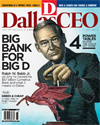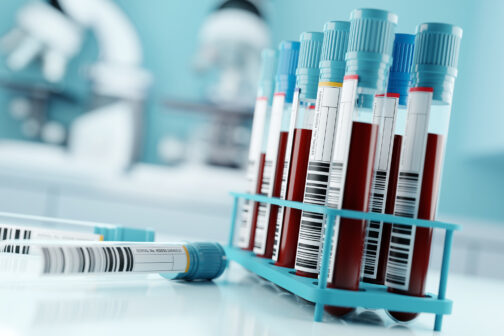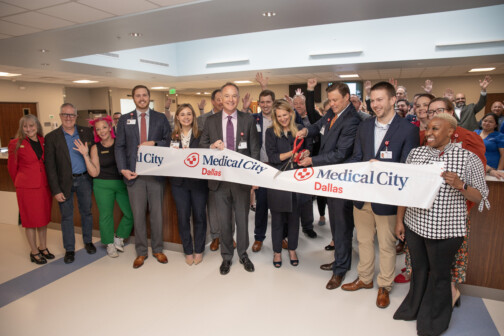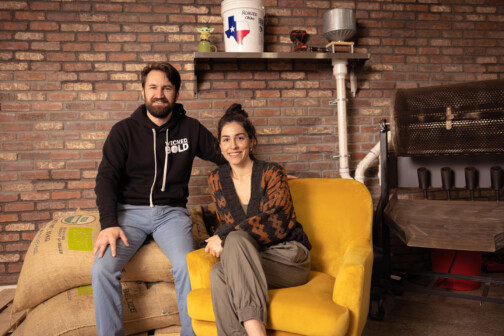As the shadows that the high-rises cast eastward grow longer, downtown doesn’t so much come alive—it’s already a center of commercial hustle and bustle from the early hours—as it transforms. An exciting vibe takes hold, and it’s almost tangible. Many—maybe most—of those who work down here punch out and stick around for a while. They stroll down inviting streets for an après work cocktail, or maybe to do a little shopping. And for every office denizen who heads out of the Central Business District toward the North Texas suburbs, it seems as though two folks arrive from the suburban hinterlands, eager to take in the downtown nightlife with its eccentric clubs, its elegant restaurants, its eclectic galleries, and its expansive shops.
Nice scene, hunh? Too bad it’s in the heart of Fort Worth, 30 miles west of downtown Dallas. Talk to anyone who’s visited Sundance Square and the question inevitably comes up—“Why can’t downtown Dallas be like that?”
There are several reasons, really. Size, demographics, population, geography, available land, the private funding and security the Bass family pours into Sundance—all of it is relevant. Entire books, like Joel Garreau’s Edge City, have been written on how and why cities like Dallas have grown away from the traditional “center city” model more common in smaller municipalities like Fort Worth and the older, northeastern cities. But in the end, it all boils down to the simple fact that Dallas is not Fort Worth.
“And as much as I like Sundance Square, I don’t want downtown Dallas to be downtown Fort Worth,” says Dallas City Councilmember Angela Hunt, whose 14th district covers downtown Dallas. “What we have in the works is much, much bigger.”
A thriving and integrated downtown is critical to Dallas’ commercial growth. For too many years and despite too many promises, downtown Dallas was a place that went to sleep when the sun went down and the last workers had clocked out. The cost of this became painfully clear in 2001, when the Boeing Co. chose Chicago over Dallas for its new world headquarters. When pressed as to why the aerospace giant chose Chicago, Boeing execs said downtown Dallas lacked a vibrancy and energy. More recent losses to other submarkets in the Dallas area—TXU Corp. plans to move its headquarters to Irving and Yahoo is abandoning its Deep Ellum digs for Richardson—underscored the sort of bad news that has dogged downtown for quite some time. (Notwithstanding the potentiality of Comerica choosing downtown as its Dallas home)
For the longest time, it seems, the challenge was just getting people to live in the CBD, so that it wasn’t a ghost town after 5 p.m. Residential developers complained that people wouldn’t move there without established grocery stores. Grocery stores said they wouldn’t build unless there were residents. It became a frustrating game of chicken and egg until finally—in a rare moment of wise investment—the city broke the stalemate by backing Urban Market. Like Cityplace had done with the Target-anchored shopping center at Central and Lemmon in the mid-1990s before West Village exploded, the city would underwrite Urban Market’s losses to get the ball rolling.
But there are signs things are changing. And not just a little. The thing is, while it hasn’t all come together, the pieces are starting to fall into place. It’s hard to get around the CBD these days because there are so many roads closed because of the construction and renovations. Hard hats and blue collars are as commonplace as hair gel and white collars.
“I’d say the revitalization has happened. What’s left now is just connecting the dots, and that’s what I see happening over the next couple of years,” says John F. Crawford, president and CEO of Downtown Dallas.
According to Downtown Dallas, more than $700 million has been invested in development inside the downtown loop in the past decade. Office vacancy rates still push 25 percent, but that rate is always artificially high given the number of older, Class C office properties that remain on the rolls. Besides, new construction always drives new demand. Investors certainly aren’t shy about downtown anymore—almost $1 billion worth of downtown properties changed hands since mid-2006. California-based Younan Properties, the largest single investor in Dallas real estate properties with more than 6.2 million square feet, recently put down more than $100 million to acquire Thanksgiving Tower downtown.
The cranes tell the tale:
Two new office towers are under construction in the downtown loop—the first new construction inside Woodall Rodgers since the 1980s. Lucy Billingsley’s One Arts Plaza in the center of the city’s burgeoning arts district is a $125 million mixed-use project that will be home to the corporate headquarters of 7-Eleven Inc. as well as Dallas-based law firm Thompson & Knight. The 10-acre, three-building complex will combine retail, residential, and almost 500,000 square feet of office space. To say the office leasing has been successful is a bit of an understatement—of that 500,000 square feet of space, only 28,668 square feet are still vacant. Plans for Two Arts Plaza and Three Arts Plaza are already under way.
Just to the west, at the entrance to downtown on Akard Street, Hunt Oil Co. is putting the finishing touches on its inspiring new $120 million, 15-story headquarters. The 340,000-square-foot space will be home to some 500 Hunt employees, according to figures previously published.
On the residential front, Crawford says that more than 1,800 residential units are under construction in the downtown area with another 1,700 announced, and there are about 3,500 people already living inside the loop in the CBD. He expects that number to double within the next 18 months and for there to be 10,000 people living inside the downtown loop within the next five years. Forest City Enterprises’ $270 million conversion of the 36-story Mercantile Bank complex from downtown eyesore and outdoor urinal into a luxury retail and residential tower is by far the most talked about residential project downtown. The 65-year-old structure has been derelict since the mid-1990s, and when it’s finished in 2008, it will account for 214 apartment homes and community amenities. Forest City is also constructing a second adjacent building that will house another 160 units. But it’s certainly not alone on the residential front.
Rockwood Realty Partners is hard at work on its $50 million, 283-unit renovation of the 30-year-old, 26-story high-rise at 1200 Main. It should be finished by mid-2007, and it’s already 68 percent sold. Republic Center on North St. Paul converted 25 floors to 229 luxury residential units and leasing there, too, has been robust. Despite construction continuing through the middle of 2007, almost 30 percent of units have been leased.
To the south and east of all this office and residential construction, there’s the Farmers Market. The City of Dallas has ambitious plans to turn the entire area into a pedestrian-friendly “food district.” Starting at the Arts District, it will move through Main Street Garden Park, into the Farmers Market and across I-30 to Dallas Heritage Village—linked by an urban trolley line. It’s a few years and another $20 million in bonds away, but almost $9 million has already been raised in previous city bonds.
In the other corner of downtown, the West End—long considered a tourist haven on the decline—seems to have been given new life. A JPI apartment community on Ross near the West End is thriving, and the clubs around West End have become must-stop nightspots for the beautiful set.
Still, it takes more than some loft residents, swanky clubs, and new office buildings to create a vibrancy. It takes interconnectivity. It takes a living mix. You may have all the ingredients, but without the right touch it doesn’t all come together. Just as man is more than the sum of his parts, it takes that undefinable spark to bring it to life.
Some say that breath of life is the expanding DART trolley line that will connect Uptown and parts of downtown. All of the great city centers have some form of easy access transportation that assists pedestrians, and many think that’s what DART can be. Last month, DART began a two-year transit study for downtown that includes bus, light rail, streetcar, and subway.
But more likely, the ambitious Woodall Rodgers Park plan is the answer. The $60 million project calls for most of Woodall Rodgers Freeway to be decked over, all the way from Pearl to St. Paul streets. A lush 5.2-acre urban greenspace park would then be installed on the new surface, eliminating the sense of there being a concrete moat surrounding downtown. Backers believe it can be a scaled version of New York’s Central Park for Dallas. Sure, we have the Trinity River Project, but that’s more like downtown Dallas’ front yard. Woodall Rodgers Park would tie together the Arts and Food districts with the primary Central Business District, Reunion, and West End. It would be a destination both for downtown workers and urban dwellers that would forge a sense of community and commons. It would, backers hope, create that missing impetus that could turn Dallas—at least Dallas’ downtown—from an automobile city to a more pedestrian-minded one.
“You can’t understate what Woodall Rodgers Park will do as far as energizing all of these parts we’ve put together,” Hunt says. “It’s not that it’s the centerpiece so much as it’s what makes all of this fit together. It seems like for so long we had all of these separate spheres of development, each in its own world. But it’s all coming online and starting to grow together.
“To me, it’s like Christmas Eve,” she adds. “You can see all these presents under the tree and you know that pretty soon it’s going to be Christmas. That’s how I’m seeing it. All those cranes are more than a faraway promise of downtown revitalization. It’s a reality. We’re all finally seeing the fruits of our labors. We don’t have to tell anyone to be patient anymore.”






